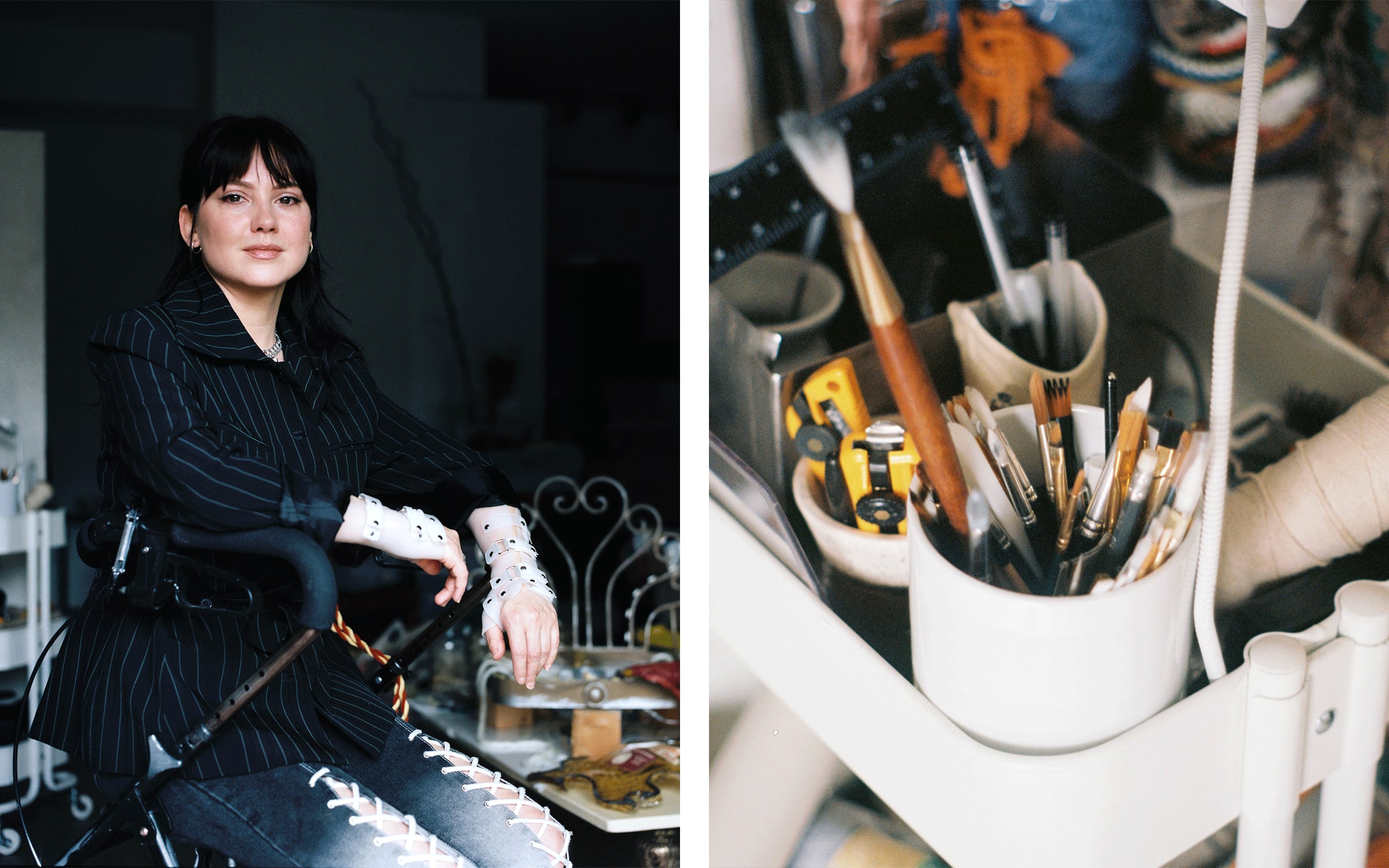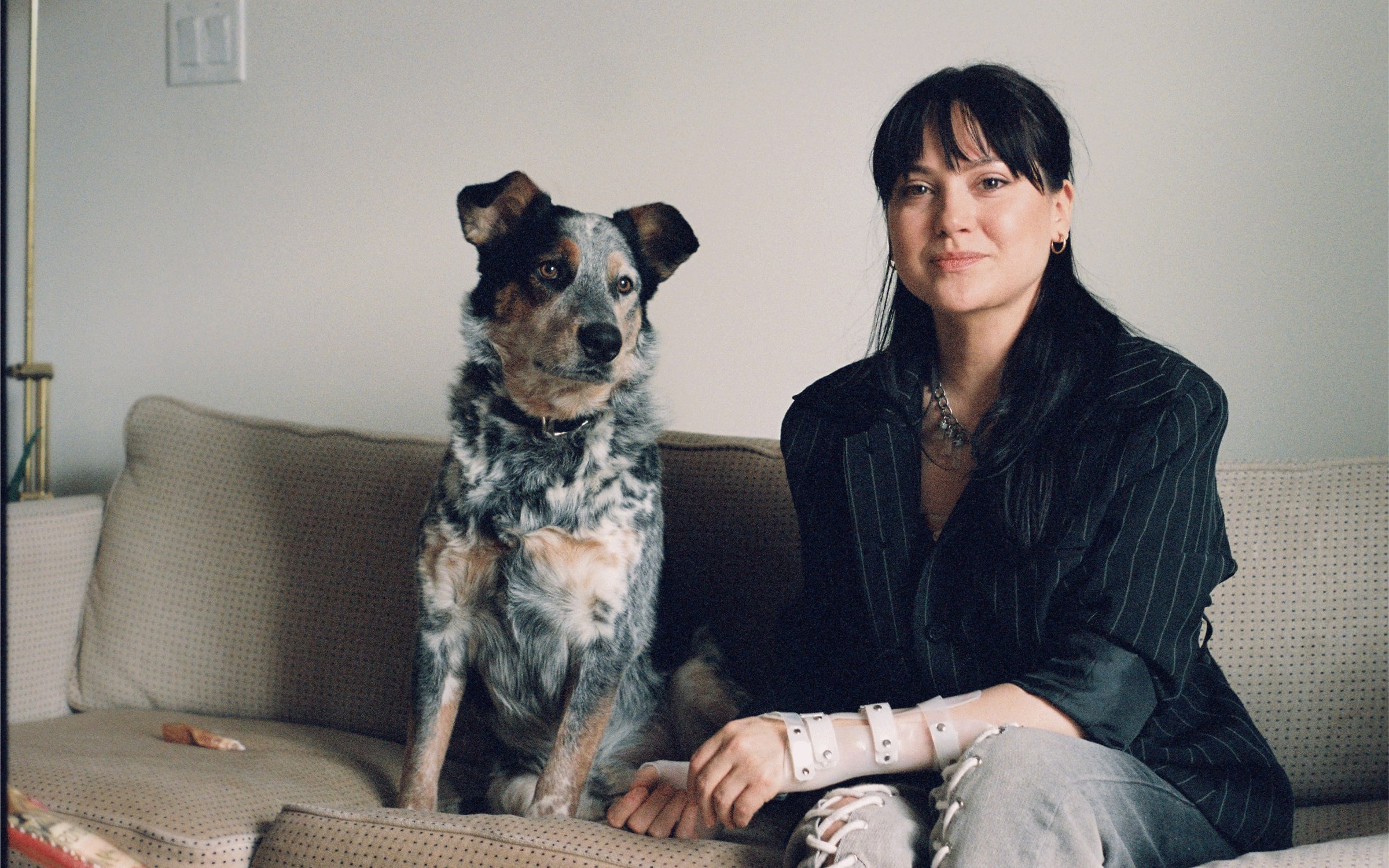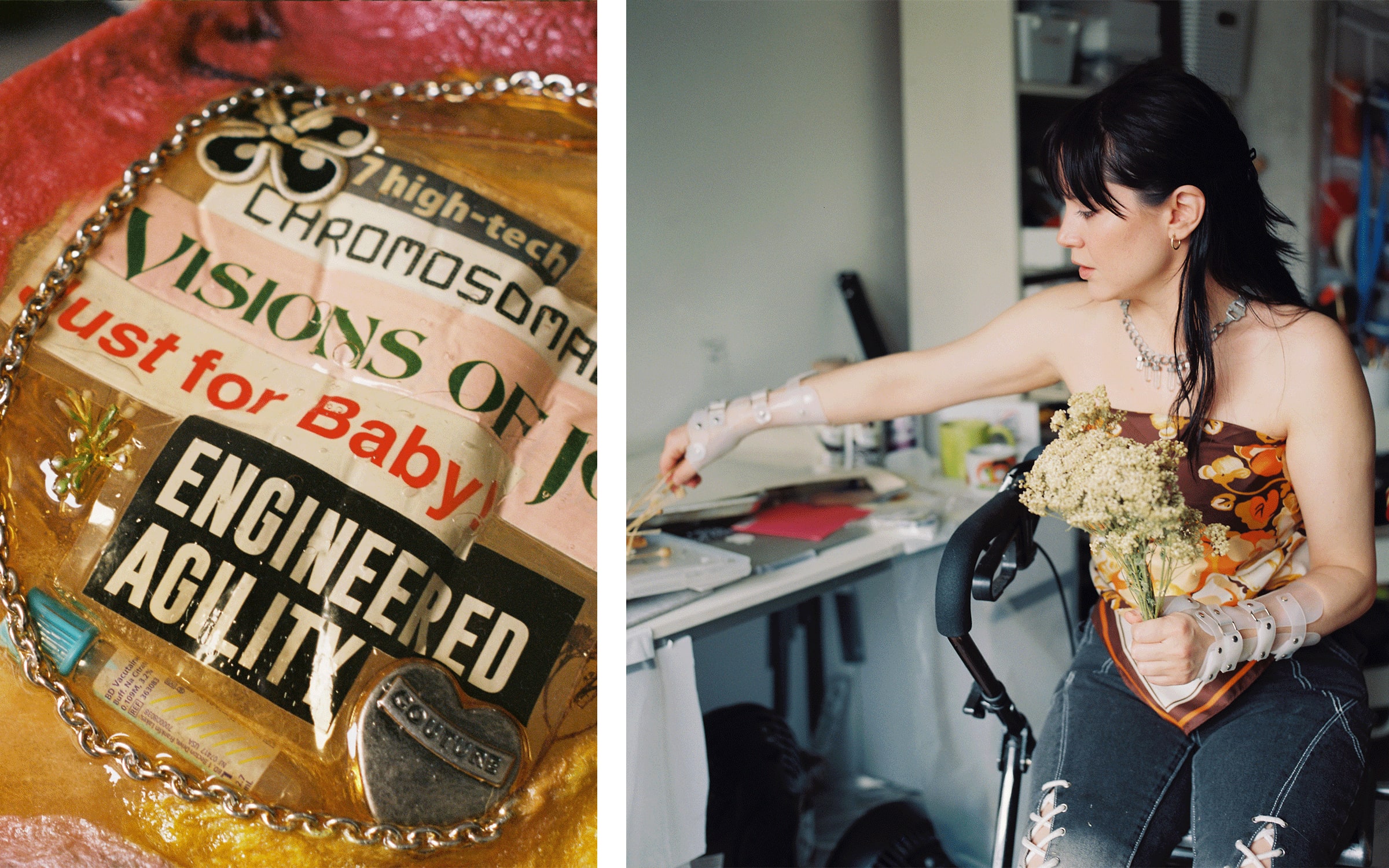‘I am a multidisciplinary artist, writer, and disability rights advocate. I have been making art since childhood, although for a long time, I didn’t share it with others; I feared judgment because I had internalized cultural standards of ableism. Now, creating for my community is important to my practice, as is working with different access points and modalities that can reach a wide spectrum of viewers. Much of what I do stems from a long line of radicalism and anarchy, although my art also reflects a deep connection to the flora and fauna of rural life, in contrast to the cold and technological medical-industrial complex. My work is not just about self-expression. It is also about education and advocacy.

‘I was born in Vernon, a small city in British Columbia, and grew up in different tiny, isolated towns. Since infancy, I have been faced with rare inflammatory, hematologic, and autoimmune diseases, sometimes requiring intensive treatments, wheelchairs, and assistive devices. One of my earliest memories is of being alone in a hospital over Christmas. I was heavily medicated when young and doctors did not provide much hope for my future.
‘At the same time, as a kid, I worked to help
our family get by. My brother and I painted signs for the auto shop that we
lived and worked in for a while. I also cleaned houses and offices with my
mother, often missing school. My sisters and brothers and I turned to art as a
form of fantasy and escapism – working- and creating-as-distraction were coping
mechanisms. We improvised with free found objects and materials. I often
escaped into drawing, making collages, and writing in bed at night. I remember
collecting fashion magazines from the recycling bins of houses that my mom and
I cleaned, and I stuck cutout images all over my walls. I have also always enjoyed
baking, thrifting, and sewing. I was eight when I made my first floral cake, which
is something I’ve incorporated into my art practice.
‘Due to living in unstable homes with family members struggling with addiction and mental health, my illnesses were not a priority. Some of my disabilities were not fully understood for years. Diagnosis can be a form of privilege, and lack of access to care is common and harmful. When I was in sixth grade, living in different homes, I received more concrete diagnoses. I then dropped out of school in grade eight and eventually was taken into government care. My principal long-standing diagnosis is Still’s disease, or systemic juvenile idiopathic arthritis, and I have multiple other “comorbidities,” including pericarditis, syringomyelia, and vasculitis. The disease has damaged my spinal cord, eyes, lungs, heart, bowels, and joints – really every part of my system.
‘At the time, childhood disabilities were not well understood and there was little infrastructure for support – I had to become responsible for my own care at a young age. I was emancipated at 15, I lived by myself in a tiny apartment, and high school was full of systemic barriers; I didn’t graduate until I was 27. Today, I arrange my art practice around chronic pain, inflammation, and exhaustion, and a strict regime of IV, joint, and spinal treatments, medications, and physiotherapy. There are times when I cannot stand or walk. I often work from bed, lying down with my back, arms, and legs in braces.

‘When I was 18, I was sent to Vancouver as a youth in government care to live in a long-term physical rehab facility in a power chair. I kept afloat organizing after-hours events like EDM and shoegaze shows. I designed cassette and record art for local bands and flyers for techno parties. I started many jobs and enrolled in different schools, but usually ended up in the hospital and was fired from work or had to withdraw from my courses. I curated shows for other artists and made cakes and botanical beverages for exhibition openings that I was usually too debilitated to attend.
‘At the encouragement of friends, I eventually
entered a leading art school. I had some wonderful teachers, but my frequent
hospitalizations meant I often could not meet deadlines. There were also no
courses offered in bioethics or disability arts, and no accommodation of my own
disabilities; my doctors could see the impact it was having on my illness and
pushed me to drop out.
‘It was only after leaving art school, where there was no critical engagement with disability, that I decided I would take the issues on myself. I started posting my art, memes, and advocacy on different Instagram accounts. Now, there are incredible disability justice resources available on the Internet, but there weren’t then. I think my meme project @hot.crip – which was created in 2019 as an experiment to share simple polemical comedy around ableism within everyday culture – was one of the first disability accounts out there.
‘More recently, I learned that I have nerve disorders and cognitive disabilities. My practice is informed by my lived experiences, however, I believe the focus should be on the societal and structural supports necessary to provide equity, not the disclosure of diagnoses. Each of the modalities I work with speaks to the alienation and structural, societal, and interpersonal barriers that disabled people face in relation to able-centric norms.

‘Two materials that I frequently use are biomaterials and gelatin. Biomaterials function as a metaphor for the care that disabled bodies require and also serve as a placeholder for disabled people who often do not have access to exhibition venues. Sculptures made from gelatin appear glass-like and inanimate, but they cloud, warp, melt, mold, and react to the light, humidity, bacteria, and fungus in their environment. They also speak to transgenic treatments and bioethical issues, such as the use of animal cells, human cells, animal research, and the gelatin industry within the pharmaco-industrial complex. Like diseases and disabilities, biomaterials require special accommodations.
‘In my sculptures, I also often incorporate flowers, herbs, syringes, hardware, nutritive foods, and expired pharmaceuticals. The gelatin also works as a metaphor for transparency, vulnerability, and the ethical and environmental complexities of the multiple pharmaceuticals I have to ingest and inject to keep myself functioning day-to-day – to keep myself active as the artist I have always been, but only recently knew myself to be.’
Sharona Franklin’s work will be presented in the Statements sector of Art Basel 2023 by Kendra Jayne Patrick (Bern, New York).
Robin Laurence is an independent writer, critic, and curator based in Vancouver. She has published feature articles and reviews in local, national, and international publications and has contributed essays to many books and exhibition catalogues. In 2021, she won the Max Wyman Award for Critical Writing.
Photographs by Kali Spitzer for Art Basel.
Published on April 28, 2023.